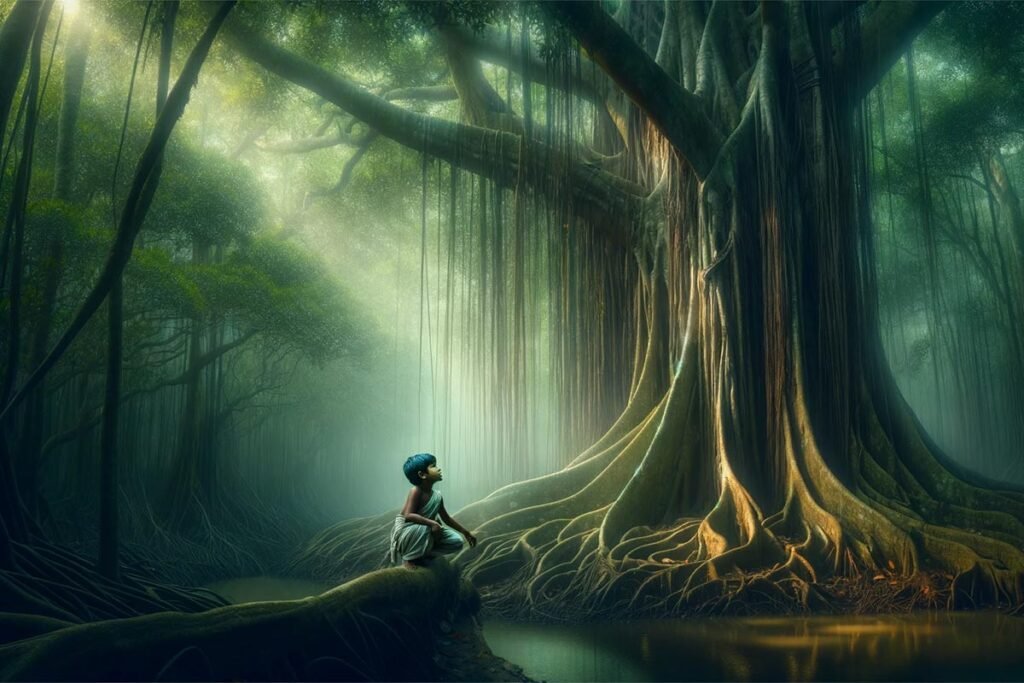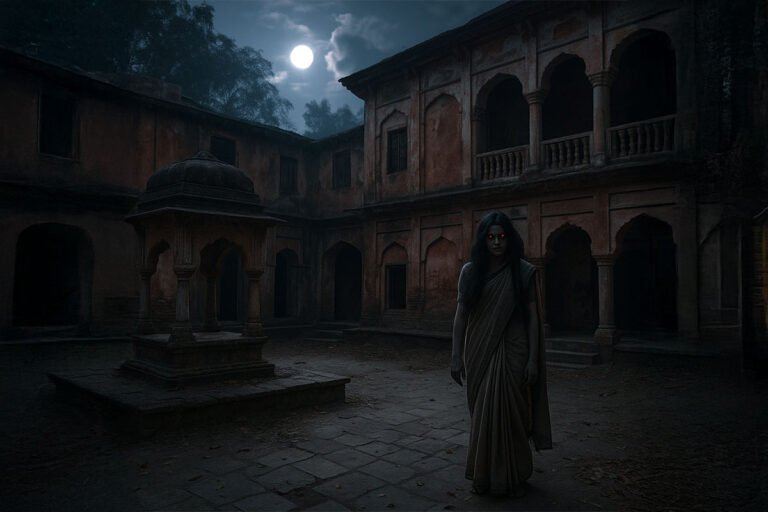In the heart of Bhitarkanika’s mystical mangroves, where the sun played hide and seek through the dense foliage and the rivers carried ancient secrets, stood an enigmatic banyan tree. Its roots delved deep into the earth, and its branches reached towards the heavens, as if bridging worlds. This was the Whispering Banyan, a guardian of forgotten lore and a holder of timeless wisdom.
In the neighboring village, a young boy named Madhaba lived with his parents. Unlike other children his age, Madhaba was drawn not to games but to the old stories and legends that his grandmother, Savitri, recounted by the flickering firelight each evening. Among these tales, the one about the Whispering Banyan captivated him the most. Savitri spoke of how the tree’s whispers could unravel the most intricate of mysteries and heal the deepest of wounds. But, she cautioned, every secret shared by the tree came with a price – a fragment of its ancient life force.
Madhaba’s fascination with the banyan tree grew with each passing day. He felt a strange pull towards it, a connection that tugged at his soul. One misty morning, when the village was still asleep, Madhaba slipped away into the dense mangroves. He navigated through the labyrinth of trees and creeks until he stood before the majestic banyan. Its presence was overwhelming, and Madhaba felt a mix of reverence and fear.
He hesitated, then gently placed his palm against the rugged bark. The whispers began, soft and subtle, like a distant melody. They spoke of bygone eras and great warriors, of love lost and battles won. Madhaba listened, enthralled. The tree’s wisdom helped him solve small problems in the village – a missing goat, and a feud between neighbors. His solutions, inspired by the banyan’s whispers, earned him respect and admiration.
But as the tree shared its secrets, it began to wither. Its vibrant green leaves turned a dull brown, and its once robust branches grew frail. Madhaba noticed the change and was torn. The joy of helping his village weighed heavily against the gradual decline of his beloved banyan.
Savitri noticed the change in both the boy and the tree. One evening, she sat Madhaba down and told him the deeper truth of the banyan. The tree was an embodiment of nature’s delicate balance. It wasn’t merely a giver of wisdom; it was a symbol of life, interconnected with everything around it. “In taking too much, we risk losing everything,” she said, her eyes reflecting the flames of the fire.
Madhaba realized the gravity of his actions. He knew he had to make a choice. That night, under the starlit sky, he made a decision that would change the course of his life and that of the village. He called for a meeting of the villagers and revealed the true cost of the banyan’s wisdom. The villagers, initially skeptical, were moved by Madhaba’s earnest plea and the visible decline of the tree.
Together, they vowed to protect the Whispering Banyan, to let it recover and flourish. They turned to other ways to solve their problems, relying on each other’s strengths and wisdom. The banyan, relieved of its burden, began to heal. New leaves sprouted, and its branches regained their strength.
Years later, Madhaba, now a young man, would still visit the banyan, but no longer for its secrets. He came to enjoy its shade and the peace it offered. The tree, in turn, seemed to welcome his presence, its leaves rustling gently as if in greeting.
The tale of Madhaba and the Whispering Banyan became a legend in itself, a story passed down through generations. It spoke of the respect for nature’s gifts, the understanding of life’s intricate balance, and the wisdom in knowing when to take and when to give back. The banyan tree, standing tall and proud, continued to whisper, but its secrets were now of a different kind – reminding all who came near of the harmony that must exist between man and nature.








